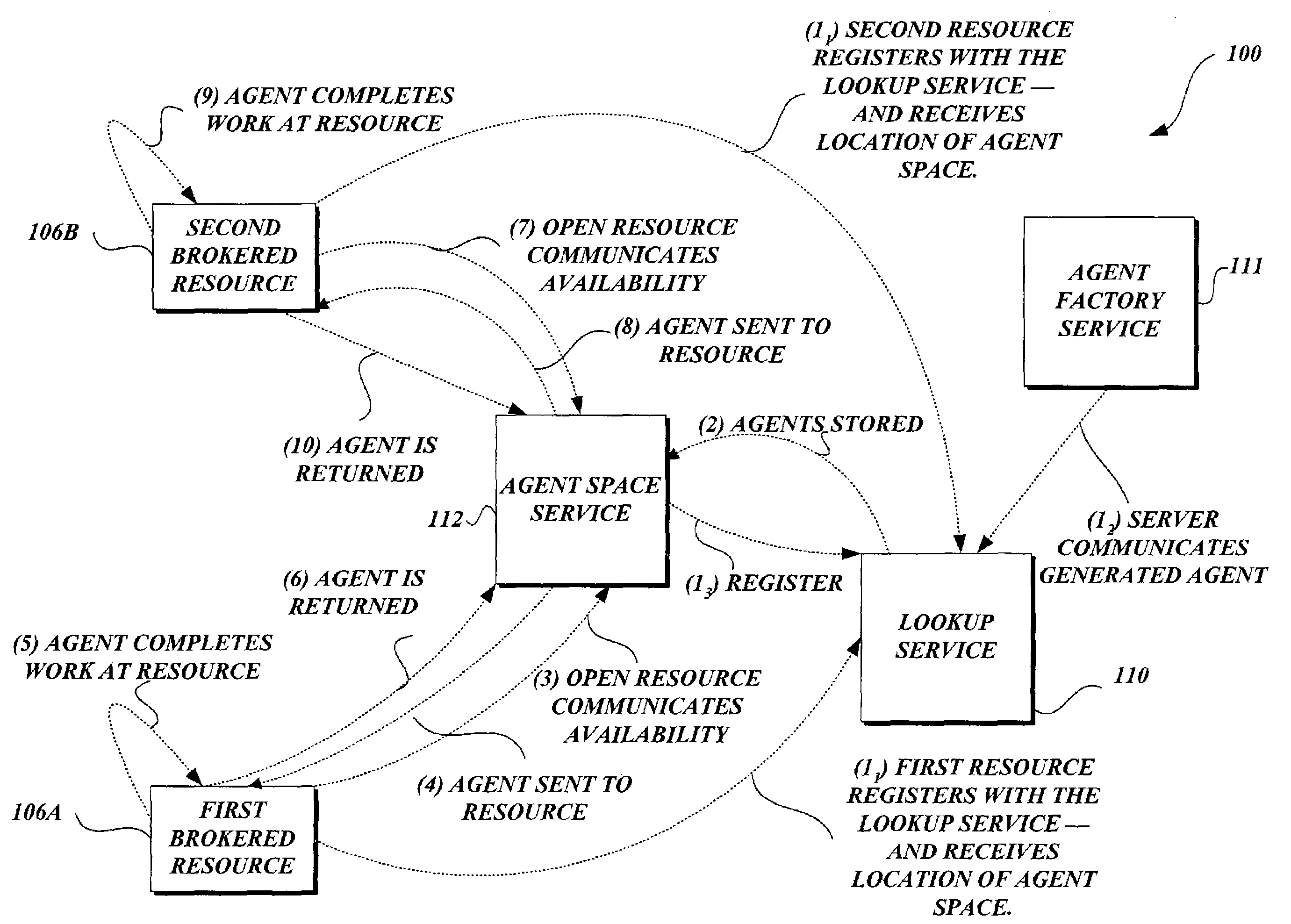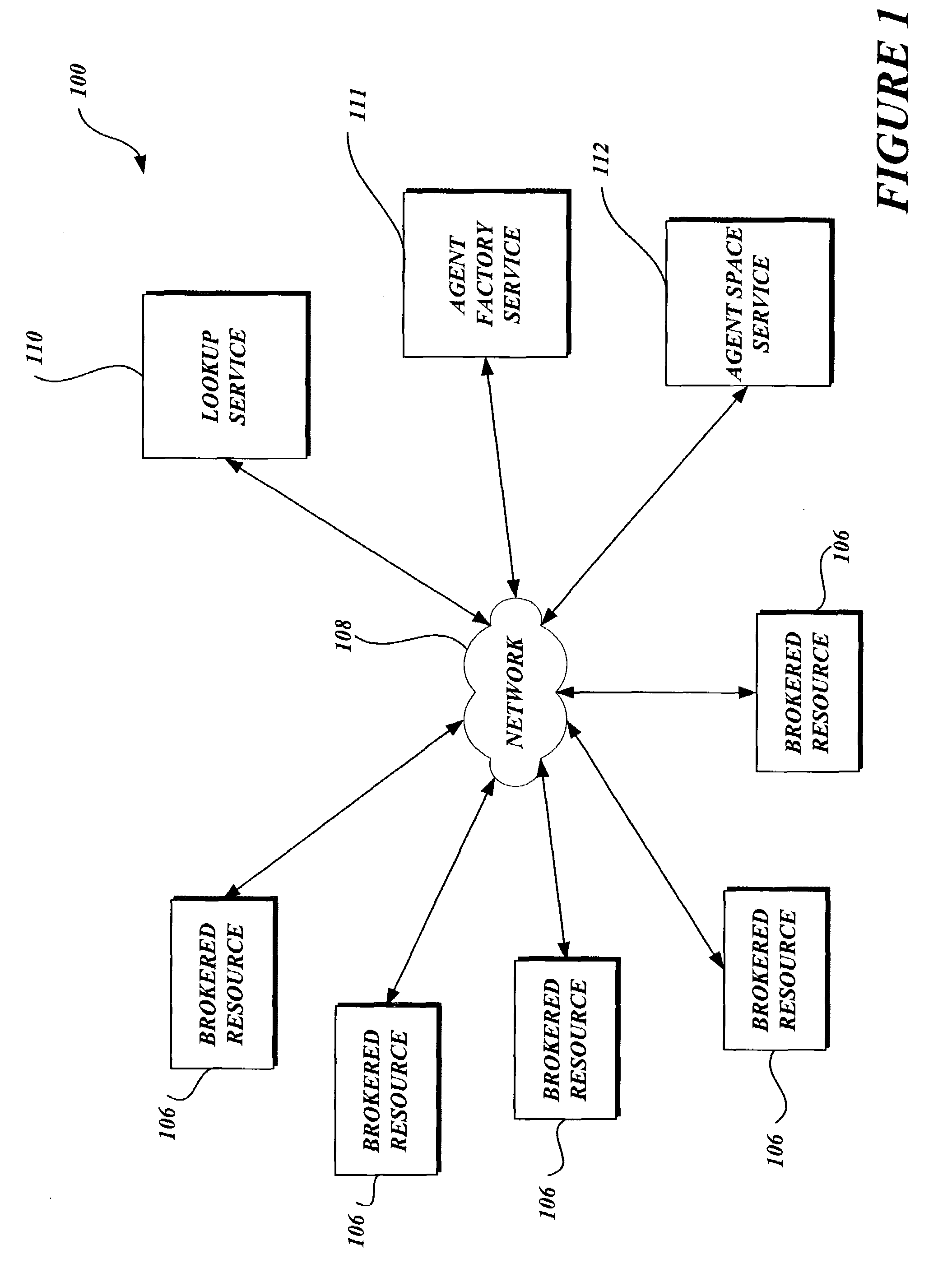System and method for managing distributed computer processes
a distributed computer and process technology, applied in the field of software and computer hardware, can solve the problems of insufficient design and implementation of substantial amount of human resources, inability to efficiently coordinate data retrieval capabilities with other software applications or other individual systems, and existing systems that do not effectively coordinate process workloads, etc., to achieve the effect of improving execution efficiency
- Summary
- Abstract
- Description
- Claims
- Application Information
AI Technical Summary
Benefits of technology
Problems solved by technology
Method used
Image
Examples
Embodiment Construction
[0026]The present invention provides a system and method for processing data on a plurality of distributed computing devices. More specifically, in accordance with one aspect of the present invention, a system and method prioritize and assign computing tasks that are distributed over a network of computing devices. In one embodiment, the plurality of networked computers each computer communicates the availability of its computing resources to a server. The server then determines if the resources available on the networked computers match at least one computing task stored in the server for execution. If the server determines that the available resources match at least one process stored for execution, the matching computing task is then assigned to the available computer. The present invention provides improved efficiency in distributed computing tasks by allowing the distributed computers to communicate the availability of their computing resources. The present invention also provi...
PUM
 Login to View More
Login to View More Abstract
Description
Claims
Application Information
 Login to View More
Login to View More - R&D
- Intellectual Property
- Life Sciences
- Materials
- Tech Scout
- Unparalleled Data Quality
- Higher Quality Content
- 60% Fewer Hallucinations
Browse by: Latest US Patents, China's latest patents, Technical Efficacy Thesaurus, Application Domain, Technology Topic, Popular Technical Reports.
© 2025 PatSnap. All rights reserved.Legal|Privacy policy|Modern Slavery Act Transparency Statement|Sitemap|About US| Contact US: help@patsnap.com



